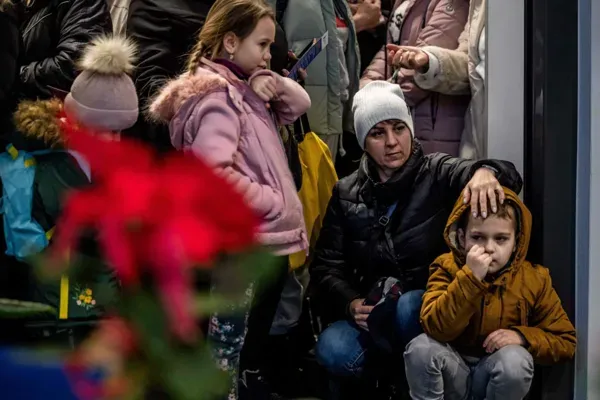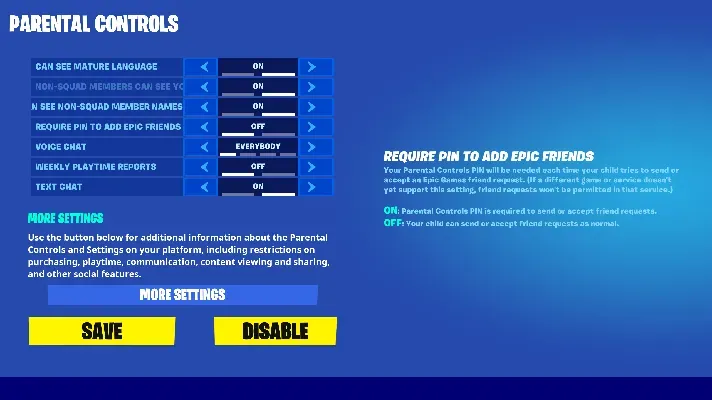The tragic stabbing of a 23-year-old Ukrainian refugee has brought the spotlight to urgent conversations about urban safety and crime. On August 22, Iryna Zarutska was fatally attacked on a Lynx Blue Line light rail train in Charlotte, intensifying the urban crime debate in the United States. With a suspect, Decarlos Brown, who has a history of violent crime and mental health issues, this incident serves as a grim reminder of the complexities surrounding violent crime media coverage. As discussions unfold around the implications of this horrific crime on communities, many are left questioning the support systems in place for refugees and the broader societal factors contributing to such acts. Zarutska’s dreams of a new life in America now tragically meet the harsh realities of urban violence, raising critical issues that demand public and media attention alike.
The brutal act that led to the death of a young woman from Ukraine has sparked widespread outcry and reflection regarding violence in urban settings. This incident, involving a refugee, points to deeper societal challenges, including the intersection of crime, race, and mental health issues. As the community grapples with the implications of this attack, it is vital to explore how acts of violence affect public perception and influence the national conversation surrounding safety and justice. Many advocates argue that the media’s narrative can skew public understanding and fear regarding crime, particularly when considering how these stories are framed. This situation not only highlights the dangers faced by individuals, such as Iryna Zarutska, but also compels us to re-evaluate the structures that govern our responses to crime and support for vulnerable populations.
The Tragic Incident of Iryna Zarutska: A Ukrainian Refugee Stabbing
On the evening of August 22, a tragic event unfolded on a Lynx Blue Line light rail train in Charlotte, North Carolina when 23-year-old Ukrainian refugee Iryna Zarutska was fatally stabbed. This horrific incident, described as a random act of violence, has polarized public opinion and sparked urgent conversations about urban crime and its implications for vulnerable immigrant communities. The nature of the crime raises important questions regarding safety in public spaces and the systemic issues that contribute to such acts of violence, particularly towards individuals who have fled their homes seeking refuge.
Iryna Zarutska’s hopes for a promising future in the United States were cut short on that fateful evening. Having recently left Ukraine in 2022, she was diligently working toward a career as a veterinary assistant. The murder of a young woman striving to build a new life amplifies the public’s concern regarding urban crime, especially when the perpetrator, Decarlos Brown, has a troubled history with the law, including mental health issues. The intersection of race, crime, and mental health challenges continues to fuel discussions about public safety and the treatment of refugees in American cities.
Urban Crime Debate: Reflecting on the Iryna Zarutska Case
The brutal stabbing of Iryna Zarutska has reignited the urban crime debate across America, reflecting deep-seated concerns about public safety and the protection of marginalized groups. This incident has not only highlighted the alarming prevalence of random violence in urban centers but has also drawn attention to the underlying social issues that perpetuate crime. As communities grapple with these challenges, discussions regarding the effectiveness of policing strategies and community support systems have come to the forefront.
In particular, the media’s coverage of Zarutska’s murder has raised eyebrows, prompting accusations of biased reporting when discussing violent crimes against white victims. Critics argue that the focus on race in crime reporting can skew public perception and escalate tensions in urban areas. As cities continue to grapple with issues of crime and safety, this incident serves as a painful reminder of the complexities surrounding urban violence, the necessity for improved mental health resources, and the urgent need for community-based solutions that foster safety for all.
Mental Health and Crime: The Role of Decarlos Brown’s Background
The arrest of Decarlos Brown, the suspect in Iryna Zarutska’s murder, has drawn attention to the crucial issue of mental health within the context of urban crime. With a substantial criminal history and documented mental illness, Brown’s background raises questions about the failures of the mental health system to address the needs of individuals before they commit violent acts. The connection between mental health and crime is a complex one, with many advocates arguing for better access to mental health services to prevent tragedies like this from occurring.
Moreover, the discussion surrounding mental health and crime is essential in understanding the broader societal implications of urban violence. Addressing mental health issues proactively could potentially reduce the incidents of violent crime that devastate communities and disrupt lives. This incident reflects the need for a comprehensive approach that includes mental health support as part of the conversation on urban safety, acknowledging that both prevention and intervention strategies are crucial in tackling the root causes of crime.
Violent Crime Media Coverage: A Call for Balanced Reporting
In the wake of Iryna Zarutska’s tragic stabbing, the media’s portrayal of violent crime has come under intense scrutiny. Reports have surfaced that suggest a disparity in coverage based on the race of victims, particularly in cases involving white individuals. Such coverage can perpetuate stereotypes and deepen divides within communities, further complicating the urban crime debate. As discussions unfold surrounding this incident, there is a mounting call for balanced media reporting that reflects the realities of all affected communities.
The responsibility lies not only with the media but also with society to demand that accurate and fair reporting takes precedence over sensationalism. Every act of violence, regardless of the racial or ethnic backgrounds involved, deserves a compassionate and thorough examination that contextualizes the events within broader societal issues, such as poverty, mental health, and systemic inequality. This cohesive understanding is vital in promoting dialogue that bridges divides and fosters solutions to the violence plaguing urban areas.
Race and Crime: The Narrative Arising from Iryna’s Murder
Iryna Zarutska’s murder has thrust the narrative of race and crime into the spotlight, reigniting longstanding tensions in America. The racial dynamics between the victim, a Ukrainian immigrant, and her assailant, Decarlos Brown, have fueled heated debates about the role of race in crime statistics and societal perceptions of safety. As communities reflect on this tragedy, it is essential to navigate these discussions with sensitivity, recognizing that crime affects individuals of all backgrounds.
Critics argue that highlighting the racial aspects of crime can lead to divisive narratives that overshadow the fundamental human tragedy involved in incidents like Zarutska’s death. As society contemplates the implications of race in urban crime, it becomes evident that solutions require an empathetic approach that transcends racial divides, focusing instead on the shared goal of preventing violence and promoting safety in every community.
Community Safety: Lessons from the Charlotte Stabbing
The stabbing of Iryna Zarutska serves as a grim reminder of the importance of community safety. It has prompted discussions on how cities can better protect their residents, particularly vulnerable populations such as refugees and immigrants. Local officials and community leaders must confront the realities of urban crime, reassessing strategies that prioritize safety on public transportation and in communal spaces where individuals seek refuge.
Additionally, fostering dialogue between law enforcement, community organizations, and citizens is crucial in enhancing safety and security. This collaborative approach can help build trust and ensure the voices of vulnerable populations are heard. Only through concerted community efforts can cities work toward minimizing random acts of violence and ensuring that tragic events like Zarutska’s murder become the catalyst for positive change rather than a cycle of fear and violence.
Challenging Urban Crime: Strategies for Improvement
The tragic incident involving Iryna Zarutska underscores the urgent need for cities to adopt effective strategies to combat urban crime. Ensuring public safety requires proactive measures that address not only the symptoms of violence—such as random stabbings—but also the underlying causes, including mental health challenges and socioeconomic disparities. By investing in community programs and support systems, cities can begin to build a more inclusive environment where all individuals feel safe and protected.
Moreover, enhancing police-community relations is vital for creating a more effective crime prevention strategy. Initiatives that promote transparency, accountability, and communication between law enforcement and community members can help bridge the gap of mistrust. As urban centers continue to face challenges regarding crime, the lessons learned from the devastation of Iryna Zarutska’s case can inform more compassionate and effective approaches that prioritize the well-being of all residents.
Policy Implications: The Aftermath of Violent Crime
In the wake of the brutal stabbing of Iryna Zarutska, local and national policymakers are faced with critical questions regarding crime prevention strategies and the management of mental health issues. This incident highlights the urgent need for comprehensive policy reforms that address the intersection of crime, mental health, and community safety. Policymakers must prioritize resources to support mental health initiatives and ensure that vulnerable populations have access to the care they need.
Furthermore, the public discourse surrounding Zarutska’s murder has political ramifications that extend beyond local jurisdictions. As debates around urban crime intensify, lawmakers may seek to align their agendas with public sentiment regarding safety and violence prevention. This offers an opportunity for grassroots movements and community organizations to advocate for measures that genuinely reflect the needs of those affected by crime, rather than merely responding to the sensationalism often present in the media.
Building Resilience: Supporting Refugees After Traumatic Events
The murder of Iryna Zarutska has shed light on the importance of supporting refugees in the aftermath of traumatic events. As individuals who have already navigated significant challenges in their home countries, refugees often face added vulnerabilities when resettling in new environments. It is vital that communities come together to offer support, resources, and a sense of safety to those who are navigating the complexities of their new lives.
Additionally, addressing the emotional and psychological impact of violent crimes on refugees is crucial. Programs that offer mental health resources, community integration initiatives, and safety education can significantly contribute to building resilience among individuals like Zarutska, who sought safety and a new beginning in the United States. By empowering refugees, communities can help create environments that minimize the risk of violence and foster a sense of belonging.
Frequently Asked Questions
What happened to the Ukrainian refugee Iryna Zarutska in Charlotte?
Iryna Zarutska, a 23-year-old Ukrainian refugee, was fatally stabbed on August 22 while traveling on the Lynx Blue Line light rail train in Charlotte, NC. This incident, referred to as the Ukrainian refugee stabbing, has sparked significant debate around urban crime and safety in U.S. cities.
Who is the suspect in the stabbing of the Ukrainian refugee Iryna Zarutska?
Decarlos Brown, a 34-year-old man with a criminal history and diagnosed mental illness, is the suspect in the stabbing of Iryna Zarutska. He was apprehended shortly after the attack and faces charges of first-degree murder.
How has the stabbing of Iryna Zarutska affected discussions on urban crime?
The stabbing of Iryna Zarutska has intensified conversations regarding urban crime in American cities, particularly surrounding the issues of race, safety, and the justice system’s treatment of individuals with mental health challenges.
What are the media’s reactions to the coverage of the Ukrainian refugee stabbing?
The media’s portrayal of the Ukrainian refugee stabbing has been criticized for perceived bias, especially in how violent crimes against white victims are reported compared to other high-profile cases, raising concerns over the representation of race in violent crime media coverage.
What impact does the Iryna Zarutska stabbing have on debates about mental health and crime?
Iryna Zarutska’s stabbing has underscored the need for a deeper understanding of the relationship between mental health and crime, as the suspect’s diagnosed mental illness raises important questions about public safety and the effectiveness of the justice system in addressing these complex issues.
What was Iryna Zarutska’s background before the stabbing incident?
Before her tragic death, Iryna Zarutska was a 23-year-old Ukrainian refugee who fled her home country in 2022. She had been adapting to life in the U.S. and aspired to become a veterinary assistant, showcasing her determination and resilience in the face of adversity.
How is the stabbing of the Ukrainian refugee related to broader conversations on safety in cities?
The stabbing of Iryna Zarutska is related to broader conversations about urban safety, highlighting concerns about violent crime, public transportation security, and the effectiveness of policing strategies in U.S. cities, all of which have significant political implications.
What can be learned from the tragic stabbing of Iryna Zarutska?
The tragic stabbing of Iryna Zarutska highlights the urgent need for improved mental health support, more effective crime prevention strategies, and a balanced approach to media coverage of violent crimes, ensuring that all victims are treated with dignity and respect.
| Key Points | Details |
|---|---|
| Incident Overview | 23-year-old Ukrainian refugee Iryna Zarutska was fatally stabbed on August 22 on a Charlotte light rail train. |
| Suspect Information | Decarlos Brown, a 34-year-old Black man with a significant criminal history and diagnosed mental illness, is charged with first-degree murder. |
| Context of the Incident | The act of violence has sparked extensive debate about crime, race, and safety in U.S. cities. |
| Zarutska’s Background | Iryna fled Ukraine in 2022, aimed to become a veterinary assistant, and was returning home from work during the attack. |
| Media Response | Criticism has emerged regarding biased media coverage of the murder in relation to other violent crimes. |
| Ongoing Discussions | The incident has raised concerns about policing, safety, and the justice system’s treatment of individuals with mental health issues. |
Summary
The tragic case of the Ukrainian refugee stabbing has ignited widespread discourse about urban crime and safety in America. The death of Iryna Zarutska not only highlights the vulnerabilities faced by refugees but also brings to light critical conversations surrounding race, mental illness, and crime within society. As the investigation continues, it is essential to reflect on the implications of such violence, ensuring that discussions lead to meaningful reforms in the justice system and community safety measures.



























